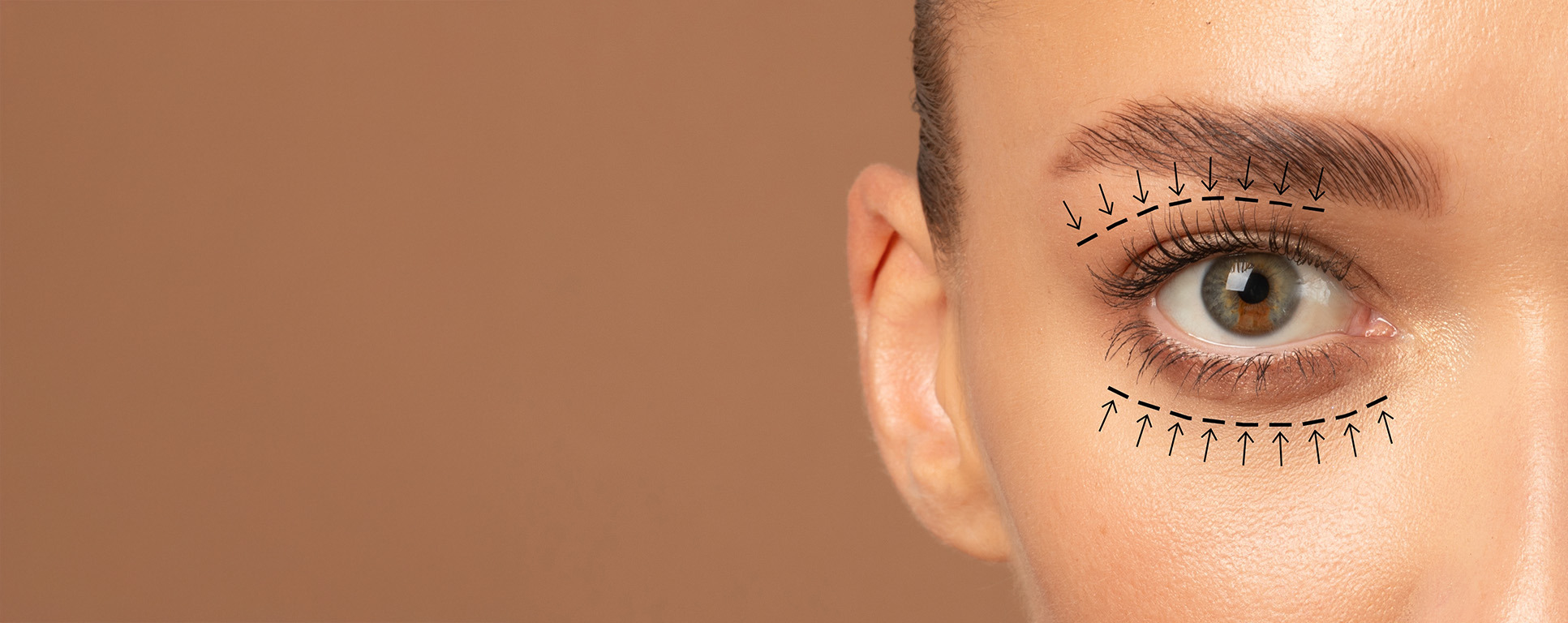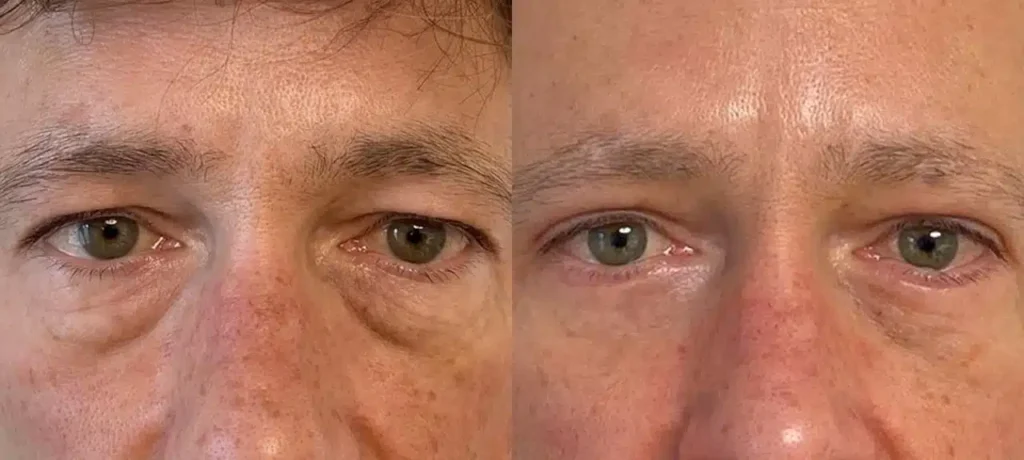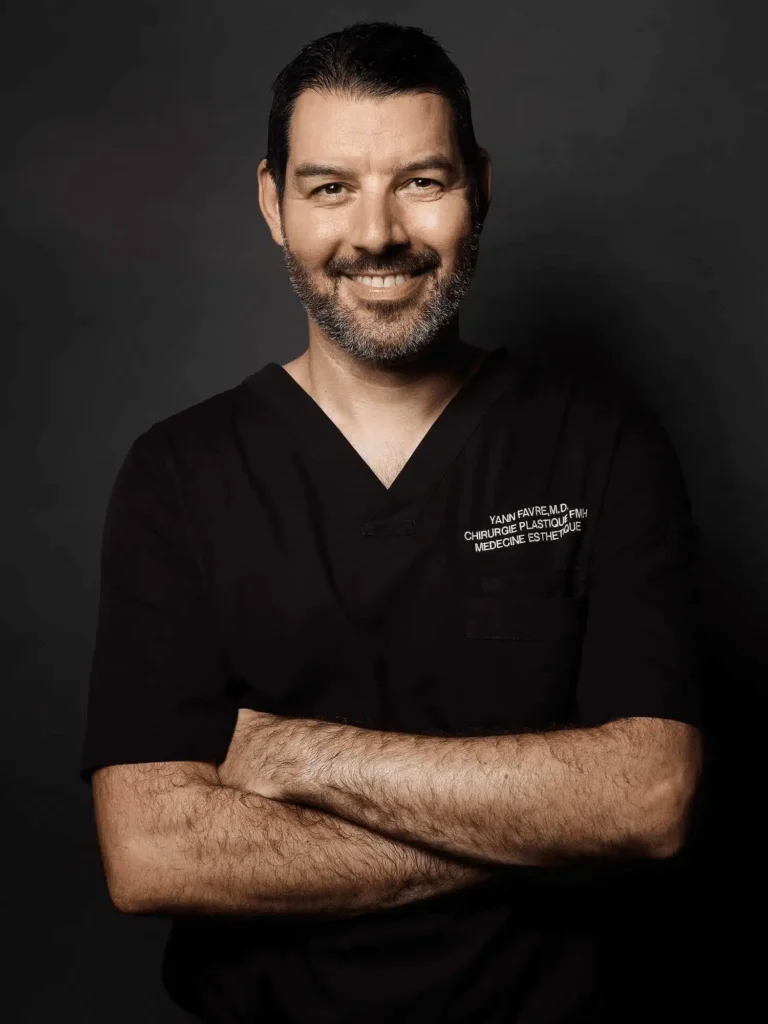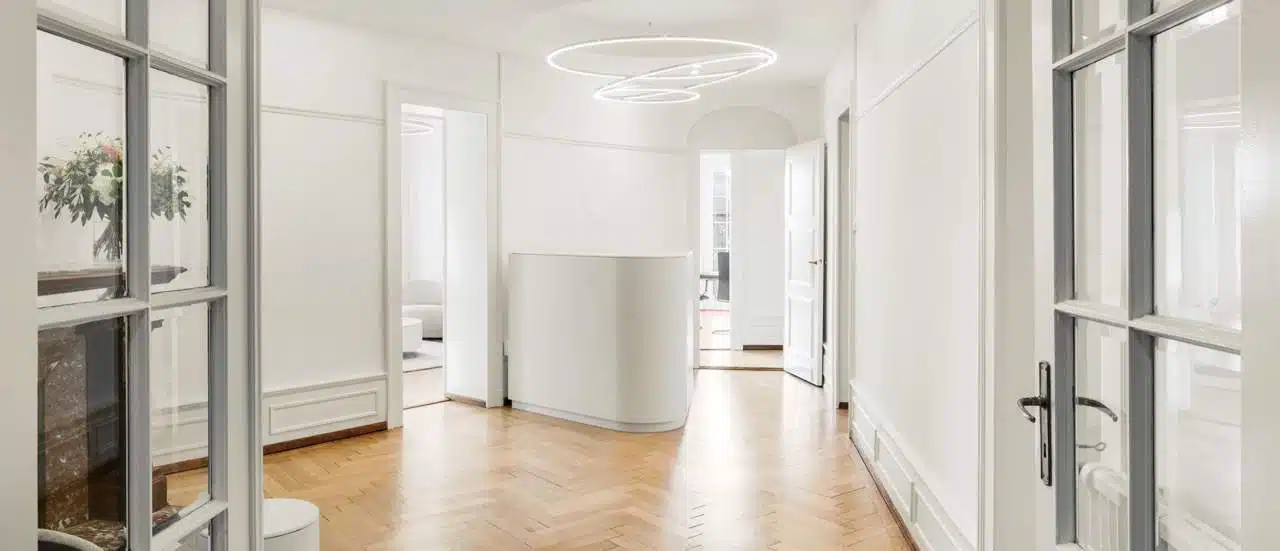Before the procedure
During the initial consultation, we ensure that lower blepharoplasty is a treatment that will meet your expectations. To this end, we clarify questions about general health, measure excess skin, skin tone and the presence of fat sacs in the lower eyelids. We inform you about outpatient surgery, discuss the additional examinations required for the operation, explain the applicable forms of anesthesia and give an overview of the various stages in the healing process. To avoid jeopardizing the wound-healing process, we strongly advise you not to smoke for around 14 days before and after the operation.
During the procedure
Before the procedure, we carefully plan and mark the excess skin and fat bag of the lower eyelids. We also provide photographic documentation. As a rule, the operation is performed under local anaesthetic, or if desired, general anaesthetic. The excess skin and fat are then removed with great precision. Extremely fine, continuous stitches are used for suturing, which sink into the skin and are therefore not visible (intracutaneous). If you suffer from severe skin elasticity of the lower eyelid, the lateral angle of the eyelids must be stabilized, and the muscles and ligaments involved fixed to the periosteum of the eye socket.
After the procedure
During the healing phase, you’ll need to wear sunglasses to avoid straining your eyes. The eye area should be cooled after the procedure with cold pack to reduce bruising and swelling. Swelling around the eyes and bruising will disappear spontaneously within 1 to 2 weeks. You should refrain from sports for 3 weeks. We also advise against wearing contact lenses. When you return home, you should use a higher, well-filled pillow and avoid creams and ointments around the eyelids for the first two weeks after the operation. The first check-up, including the removal of stitches, usually takes place 5 to 7 days after the operation. It is advisable to massage the scar with an apricot-based ointment 2 weeks after removal of the sutures.
Risks and side effects
If your eyes feel slightly dry immediately after surgery, this is perfectly normal. This sensation disappears after a few days. Bruising and swelling occur regularly, but generally disappear within 1 to 2 weeks. The appearance of a grain of milium is common after surgery in the area of the scars. These small nodules usually disappear within a few weeks without treatment. Infections and hematomas are very rare. If asymmetry persists after 6 months, it can be corrected. Other risks include watery eyes and eyelid malposition (ectropion).




